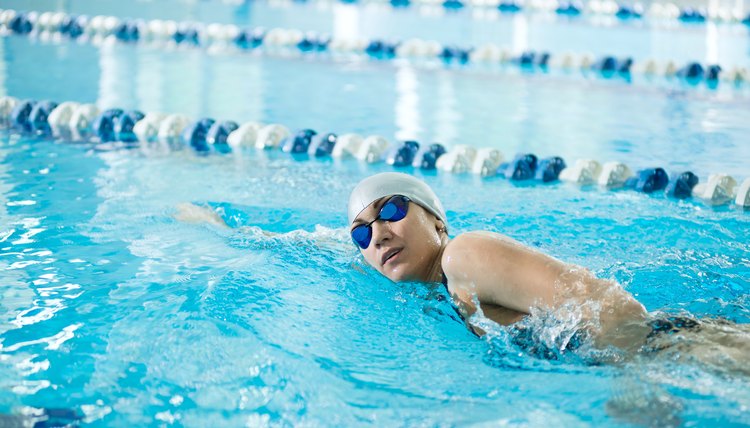Ten Basic Terminologies in Swimming

From the unusual use of the word "love" in tennis to golf's "hole in one," every sport has its own terminology, including swimming. The different swim strokes, apparel and accessories all have unique names. If you're taking up the sport, familiarize yourself with some basic terms to avoid misunderstanding your coach or teammates.
Deck and Lap
The pool is surrounded by a hard surface called a deck. When you swim from one end of a pool to the other, the distance is commonly called a lap, although a lap also can be be used to mean the down-and-back distance that is twice the length of the pool.
Lane and Lane Line
When swimming, someone might assign you to a specific lane; these lanes often are numbered. Your lane is your designated swimming area. The lanes are separated by lane lines, or floating markers attached to cables. These lines help calm the waves stirred up by swimmers.
Flag
Flags are triangular banners featuring two or more colors and hanging down over the lanes on lines. Backstroke flags are placed at the end of each lane to let swimmers performing the backstroke -- who have limited visibility -- know that they are approaching the wall.
Backstroke, Breaststroke and Freestyle
From the backstroke, which is performed lying on your back, to the breaststroke, in which you keep your body on your breast, swimming features numerous terms for various swim strokes. The freestyle, or crawl, is the most common stroke, which you perform on your stomach while alternating your arms and using a flutter kick.
Diving and Relay
Other common terms include diving, a method of entering the water by jumping in head first. Swimmers also often participate in relay events, or races in which four swimmers each swim a quarter of the total race distance.
References
- Lee BA, Oh DJ. Effect of regular swimming exercise on the physical composition, strength, and blood lipid of middle-aged women. J Exerc Rehabil. 2015;11(5):266–271. doi:10.12965/jer.150242
- Gatta G, Zamparo P, Cortesi M. Effect of swim cap model on passive drag. J Strength Cond Res. 2013;27(10):2904-8. doi: 10.1519/JSC.0b013e318280cc3a
- Tanaka H. Swimming exercise: impact of aquatic exercise on cardiovascular health. Sports Med. 2009;39(5):377-87. doi: 10.2165/00007256-200939050-00004
Writer Bio
Jen Morel has worked in the newspaper industry since 2007. An experienced backpacker, she is a contributor to "AMC Outdoors" and other hiking/environmental magazines. She holds a Bachelor of Arts in cognitive science and philosophy.
